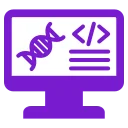Unlock Your Revenue Potential with Jindal Healthcare’s AI-Powered RCM Solution Suite
Simplify. Optimize. Succeed.
Experience our proprietary artificial intelligence (AI) platform, HealthX, simplifying your revenue cycle, minimizing your costs, and accelerating your financial growth and operational success, all while allowing you to stay focused on patient care.
110000+
300+
100%
10+
Why Healthcare Practices Believe in Us
35%
Revenue Growth
99%
Clean Claim Rate
97%
Collection Success Rate
30%
Decrease in Average AR Days
<3%
Failure-to-Collect Rate
46%
Increase in Average Net Patient Revenue
Up to 50%
Reduced RCM Costs
Empowering Healthcare Providers with Trusted RCM Solutions
Create tech-enabled custom solutions that seamlessly integrate
within your workflows

Patient Access
Deliver seamless patient care through quick, efficient prior authorization and RPA-assisted eligibility checks.

Medical Coding and Billing
Achieve faster reimbursements with certified, trained coders and billers managing your billing and claim submissions.

AR Management
Accelerate revenue recovery with our propensity-to-pay AI model, HealthX, and customized workflows for denial and underpayment management.

Practice Planning
Unlock actionable insights into your revenue cycle KPIs with intelligent dashboards and financial health consultation from our experts.
Meet HealthX – Your Trusted AI Partner for Revenue Cycle Optimization
Built to Facilitate Your Journey to Financial Success
At the heart of our revenue cycle solution suite lies HealthX, our proprietary AI-powered propensity-to-pay and workflow management platform.
Built on the cutting-edge AI technology, HealthX facilitates quick, efficient prior authorization and leverages RPA bots for patient eligibility verification; scrubs claims to ensure cleaner coding and claim submission; prioritizes AR worklists through its propensity-to-pay intelligence; employs its embedded decision-tree model to custom your SOPs for
quantitative work; and utilizes data analytics to build intelligent dashboards for actionable insights into your KPIs to create seamless, optimized workflows for your speedy revenue recovery.
The end-to-end RCM platform helps create efficient workflows for seamless patient access, accurate coding and billing, and prompt denial and underpayment resolution, thus improving your clean claim rate, shortening your AR days, and elevating your bottom line.

HealthX
Key Features
- AI-Powered End-to-End RCM Platform
- RPA-Assisted Patient Access Functions
- Claims Scrubbing for Accurate Billing
- Worklist Prioritization Using Propensity-to-Pay Intelligence
- Decision-Tree Model to Customize SOPs
- KPI Reporting through Intelligent Dashboards
- Tailored Workflows to Meet Your Financial Goals Faster
Impact
- Seamless Patient Care and Financial Experience
- Meticulous Charge Capture and Timely Claims Submission
- Quick Denial and Underpayment Resolution
- Improved Reimbursements and Accelerated Growth
- Reduced Administrative Costs and Staff Burnout
- Assured Regulatory Compliance Avoiding Legal Risks
We Harness the Best Platforms, People, Processes, and Practices to Drive Your Revenue Cycle Success
People
Our team comprises certified, trained, and experienced RCM professionals adept at handling complex situations and providing intervention when technology falls short.
Processes
We utilize technology and our subject-matter expertise to integrate and enhance your workflows and processes, eliminating data siloes and boosting efficiency.
Platforms
We leverage top-tier technological innovations like AI, ML, RPA, and BI to not only analyze and track your revenue cycle KPIs but also optimize your workflows to get you results, faster.
Practices
We follow proven practices to ensure strict compliance with regulatory standards and client SOPs while staying abreast of payer behavior and trends to prevent any legal risks or disputes.
When Our Healthcare Partners Win, We Win

30% Revenue Growth

<5% Cost to Collect

51% Improvement in Collections
Hear From Our Happy Customers!
Find Out Why They Love Us
Stacy Bryan
CEO of Nereus Anesthesia
Alexandra Williams
COO of Dynamic Pain & Wellness
Dr. Patel
Rural Health Facility, Texas
Simplify Operations, Fuel Growth.
Let's get in touch
Kindly share the details for our team to contact you.





